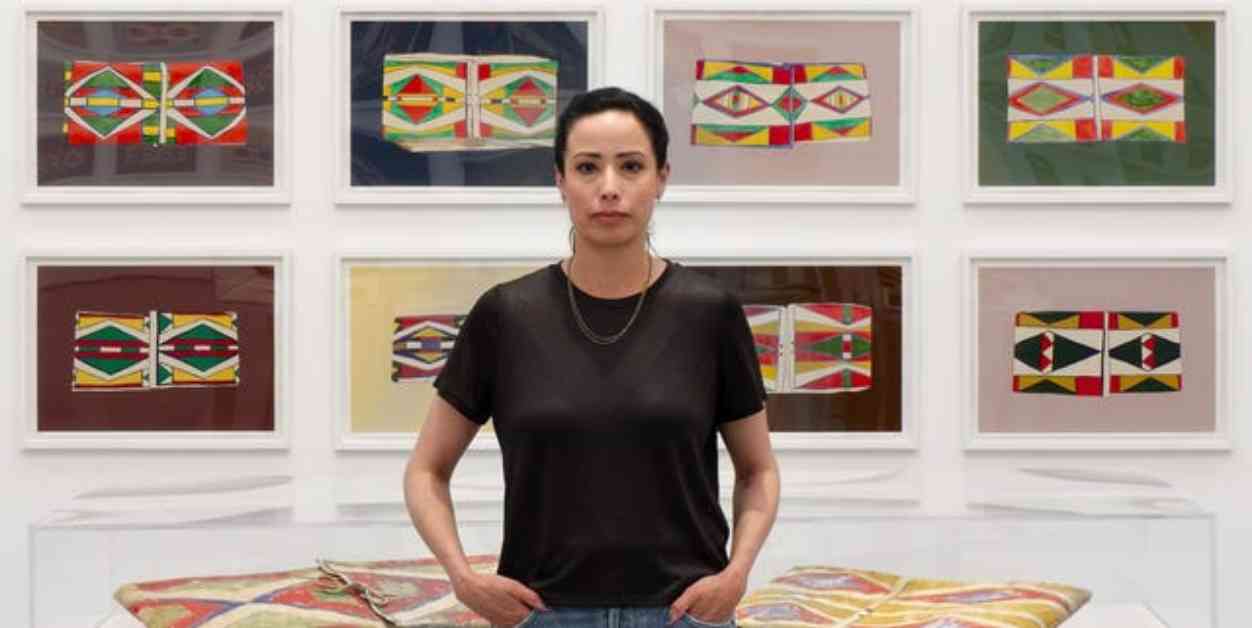Upon leaving the parking lot at Tippet Rise Art Center in Fishtail, Montana, visitors are greeted with a breathtaking view of the surrounding landscape. The focal point of the area is a striking sculpture created by Apsáalooke (Crow) artist Wendy Red Star. This sculpture, titled The Soil You See…, features a blood-red fingerprint the size of a giant’s, encased in glass and anchored to a granite rock. The fingerprint is inscribed with the names of 51 Crow chiefs who were coerced into signing treaties, ceding their tribal land to the United States government between 1825 and 1880.
Red Star’s art serves as a bridge between the past and present, challenging stereotypes about Native American identity and correcting harmful historical narratives. She works across various mediums, including photography, sculpture, installation, performance, and fashion. Red Star’s dedication to her cultural heritage is evident in her work, which acts as a cultural archive for the Crow community.
The Soil You See… originally stood on the National Mall in Washington, D.C., as part of a group exhibition curated by Paul Farber and Salamishah Tillet. The sculpture’s journey from Washington to Tippet Rise mirrors the historical journey of Crow chiefs who traveled to the nation’s capital to advocate for their communities.
Red Star’s work extends beyond challenging historical narratives; she also uses humor to address uncomfortable topics. Her series, White Squaw, critiques the portrayal of Native women in popular culture, highlighting the sexism and racism they face. Through her art, Red Star brings visibility to Native women and their contributions to art and culture.
While Native art has historically been excluded from mainstream galleries and museums, there is a growing recognition of its importance. Institutions like the Whitney Museum and the National Gallery of Art have begun showcasing Native art, bridging the gap between traditional and contemporary works. Red Star acknowledges that the aesthetic of her community may not fit within the Western fine art canon, but she sees value in preserving and celebrating her culture on her own terms.
In the presence of Red Star’s thought-provoking art, there is a sense of healing and ancestral connection. Red Star views the passing along of knowledge and collaboration with her daughter, Beatrice, as her personal form of medicine. Through her work, Red Star continues to amplify silenced histories, celebrate the strength of Native women, and challenge preconceived notions about Native identity.










